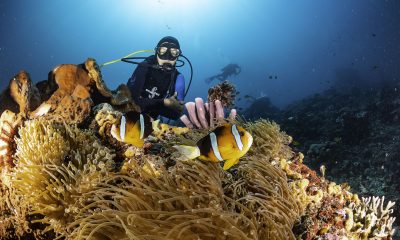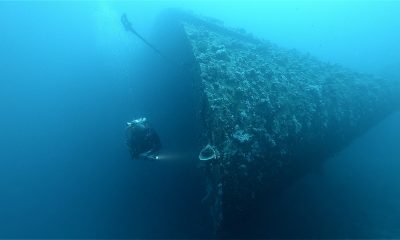News
Your Guide to Drift Diving in 2019
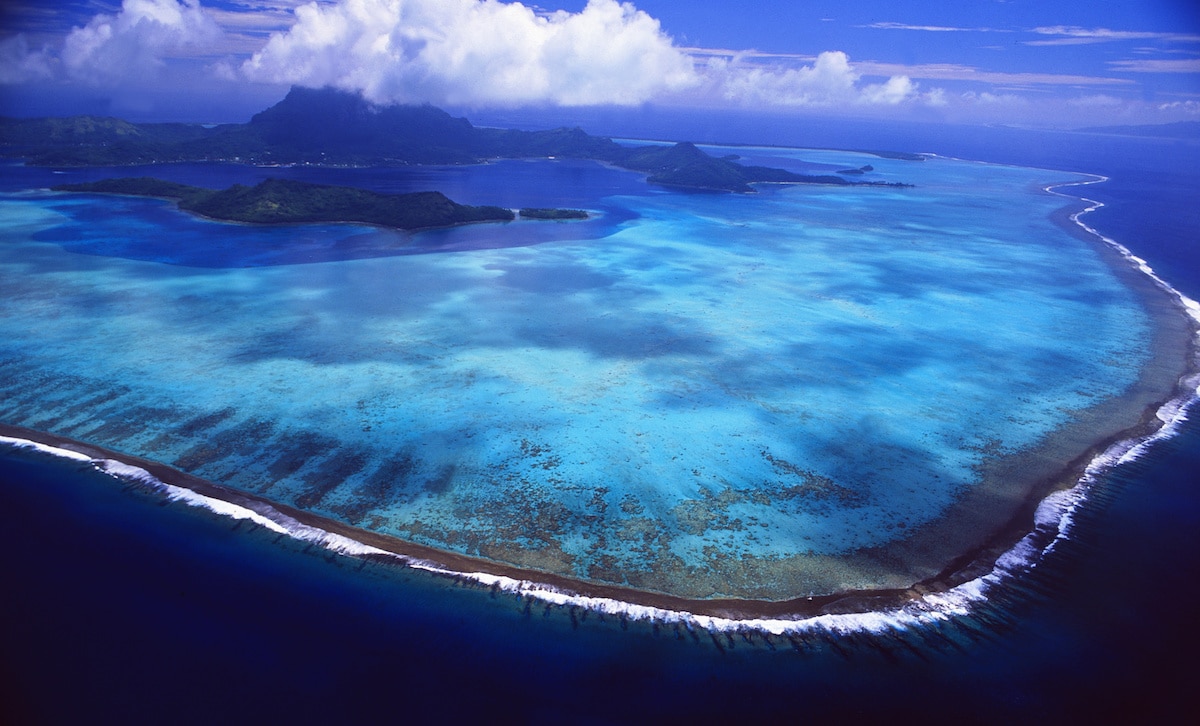
There’s nothing like diving in strong currents and watching marine life as you fly by and go with the flow. Drift diving really is one of the most exciting types of diving out there and you can find out more in our guide to drift diving in 2019.
WHY GO DRIFT DIVING?
Drift diving can be relaxing or fast-paced and exciting, depending on the dive conditions. A steady current can carry you along without having to make any effort as you enjoy the scenery. On the other hand, a strong current can give you a true sense of flying underwater.
You can cover a large area when drift diving and strong currents often attract larger pelagics, making drift dives even more special.
TOP DRIFT DIVING DESTINATIONS
French Polynesia

Fakarava Atoll in Tuamotu Archipelago and its ocean passes are famous of very large schools of sharks.
The Tuamotu Archipelago is home to exciting drift dives and plenty of shark action at Rangiroa and Fakarava atolls.
The pristine Fakarava Atoll has drift diving at the Tumakohua Pass, where the waters reach speeds of up to 4 knots. A dive there will take you from the open ocean past a ‘wall of sharks’ at the channel mouth, where hundreds of grey, blacktip and whitetip sharks gather. You’ll be swept past coral-covered walls and numerous fish as you dive before ending up in the lagoon.
Rangiroa Atoll is another great place for drift diving, at the Tiputa Pass. This channel is washed by a strong current during the incoming tide, offering the chance to dive with huge schools of grey reef sharks, plus mantas, dolphins, and plenty of reef fish.

French Polynesia liveaboard diving is suitable for a variety of experience levels, though is best experienced as an advanced diver due to the deep dives. The French Polynesia Master offers diving throughout the Tuamotu Archipelago.
Elphinstone Reef, Southern Egypt
The walls of the Elphinstone reef plunge thousands of meters to the depths and are covered in colourful corals. Sitting in the open ocean, the reef is washed by strong currents that take you along the walls at speed, with little effort needed. This is a great destination for experienced divers looking for more adventurous Red Sea diving and the chance to search for oceanic whitetip sharks whilst enjoying thriving reefs.
The Emperor Elite offers a ‘Simply the Best’ itinerary that includes Elphinstone Reef, Daedalus and the Brothers.

A cloud of anthias (Anthias: Serranidae: Anthiinae) on the Brothers dive site, Red Sea, Egypt
Shark & Yolanda Reef, Northern Egypt
If you want to try drift diving without very strong currents, Northern Egypt could be the place for you. The Shark and Yolanda reefs in the Ras Mohammed national park offer colourful coral reef diving, plentiful fish and fun current diving between the two reefs. The currents are easier going than at Elphinstone but are still reasonably strong. It is one of the top dives in the Ras Mohammed national park and is often visited during liveaboard safaris in the area.
There are numerous liveaboards to choose from and the Blue Pearl is a good choice that has a variety of safari routes to choose from.

Diving the wall, Red Sea, Egypt
The Galapagos Islands
There is no shortage of currents at the Galapagos Islands, which attract numerous pelagic species to top areas such as Wolf and Darwin Islands. Dive in, go with the flow and you can enjoy schools of hammerheads, numerous sharks, rays and more that pass you by. It is a nature-lover’s paradise and offers challenging diving with rewarding marine life sightings.
Once you’ve had your fill of sharks, be sure to visit Cabo Douglas. You’re unlikely to see big pelagics there but you can watch playful Galapagos penguins, marine iguanas, sea lions and turtles as you drift along.
The Nortada liveaboard is ideal for more personalised Galapagos safaris, as there are only 4 cabins on board and a maximum of 12 guests.

WHAT DRIFT DIVING GEAR DO YOU NEED?
It’s a good idea to take gloves when drift diving in case you need to stop yourself during a drift dive. A surface marker buoy is a must and a whistle is useful in case you surface away from your dive boat. Be sure to streamline your dive gear to prevent entanglement and be mindful of the currents as you dive. Stay close to your dive guide, listen to their instructions and enjoy!
 This article was written by divers and writers at LiveAboard.com
This article was written by divers and writers at LiveAboard.com
Blogs
Join Pharaoh Dive Club for Red Sea Splash Family Summer Camp in August 2024

3rd AUGUST 2024 – 1 or 2 WEEK PROGRAMMES
Daily water programme with Snorkelling & Scuba Diving.
Beginners or qualified, something for all.
Leave the kids with the Splash Team for days of Excitement, Fun & Adventure!

BOOK NOW: INFO@PHARAOHDIVECLUB.COM / TEL: +44 7598 329059 or +20 100 6822000
There are various options for accommodation with options for 2, 3, 4 or 5 guests.
Eco Huts provide accommodation for families of up to 4. The best option to enhance the adventure and closest to camping with basic facilities. For August we will provide central air cooling for all the Eco Huts.

Deluxe Chalets are only suitable for 2 guests. Fully air conditioned rooms with private bathroom and other facilities.

Boutique Rooms are available for families of up to 5.
Individual bespoke rooms fully air conditioned with private bathroom and other facilities.
Eco Huts: £675 per adult / £425 per child / Under 8 FREE of charge
Deluxe Chalet: £830 per adult / £505 per child / Under 8 FREE of charge
Boutique Room: £925 per adult / £550 per child / Under 8 FREE of charge
BOOK NOW: INFO@PHARAOHDIVECLUB.COM / TEL: +44 7598 329059 or +20 100 6822000
This is a truly unique opportunity to have a Family Desert Adventure totally away from it all! You will be based at the remote Roots Red Sea on the coast of the Egyptian Eastern Desert, 140km south of Hurghada city.

Red Sea Splash main focus is Snorkelling & Scuba Diving but that’s not all, we provide a rounded week of activities in support.
Pool& Field Games – Arts & Crafts
Marine Biology Workshops
Cultural Activities – Orienteering Adventures
Roots Red Sea have established strong links with the local communities of Hamerwain & El Quseir affording our guests to have a true taste of the local culture, SPLASH CAMP embraces this opportunity and bring in the local children to join in the fun with our adventure seekers.

During the day, families are welcome to take part in all activities together or the kids can be left with the SPLASH CAMP team while the parents enjoy the facilities or go diving themselves!

At the end of the day, its family time while the SPLASH CAMP team take a break. For those with the energy, there are family evening activities planned a few evenings.
Open Air Movie Night – Desert Star Gazing Walk & Talk
El Quseir Evening City Tour
The second week is very special, we head off on the Big Blue for a liveaboard safari around Fury Shoals.

BOOK NOW: INFO@PHARAOHDIVECLUB.COM / TEL: +44 7598 329059 or +20 100 6822000
U-8 Splash Club
Sadly we can’t offer Scuba Diving to the Splash Club but we can have lots of fun Snorkelling & Free Diving!
Splash Club includes:
Certified Snorkel Course – Marine ID Games – Intro to Free Diving
Arts & Craft Sessions – Adventure trails – Cultural Playtime – Pool Games

U-12 Explorer Club
In addition to an exciting snorkelling and Free Diving Programme in the Splash Club we can take you under the water on SCUBA to a whole new world of fun and wonder. If you are under 10 your first breath under water will be as a Bubblemaker and continue with daily Seal Team Missions. From 10 we will complete a Discover Scuba Diving experience in the amazing Red Sea. Alternatively we offer a full junior certification programme to become an international qualified Scuba Diver.

U-16 Adventurer Club
For qualified Scuba Divers regardless of age it’s the Adventurer Club and exploration of the local reefs and marine life. There will be 2 dives every day with the Open Ocean marine field station team who will introduce you to Red Sea marine life and workshops on marine research. Alternatively there are opportunities to continue your scuba diving certifications with our instructional team.

Parents are welcome to join the club activities and join the courses.
BOOK NOW: INFO@PHARAOHDIVECLUB.COM / TEL: +44 7598 329059 or +20 100 6822000
Big Blue might seem like the new kid on the block, but the team behind the highly acclaimed liveaboard is far from that. They have been running Red Sea safaris since the late 1980’s and were in fact part of the early pioneers who ventured out to the unknown on vessels that in today’s world, really shouldn’t have left the harbour! It’s that experience and the years of operating the award-winning Roots Red Sea resort which truly set Big Blue apart from the crowd!

Large lounge area, spacious sun deck and terrace deck.

Airy restaurant with five tables with up to six chairs per table, serving a varied and delicious menu with special dietary requirements catered for.

The spacious cabins have side by side beds and a large walk in wet bathroom.

Ample dive deck for divers & snorkelers.
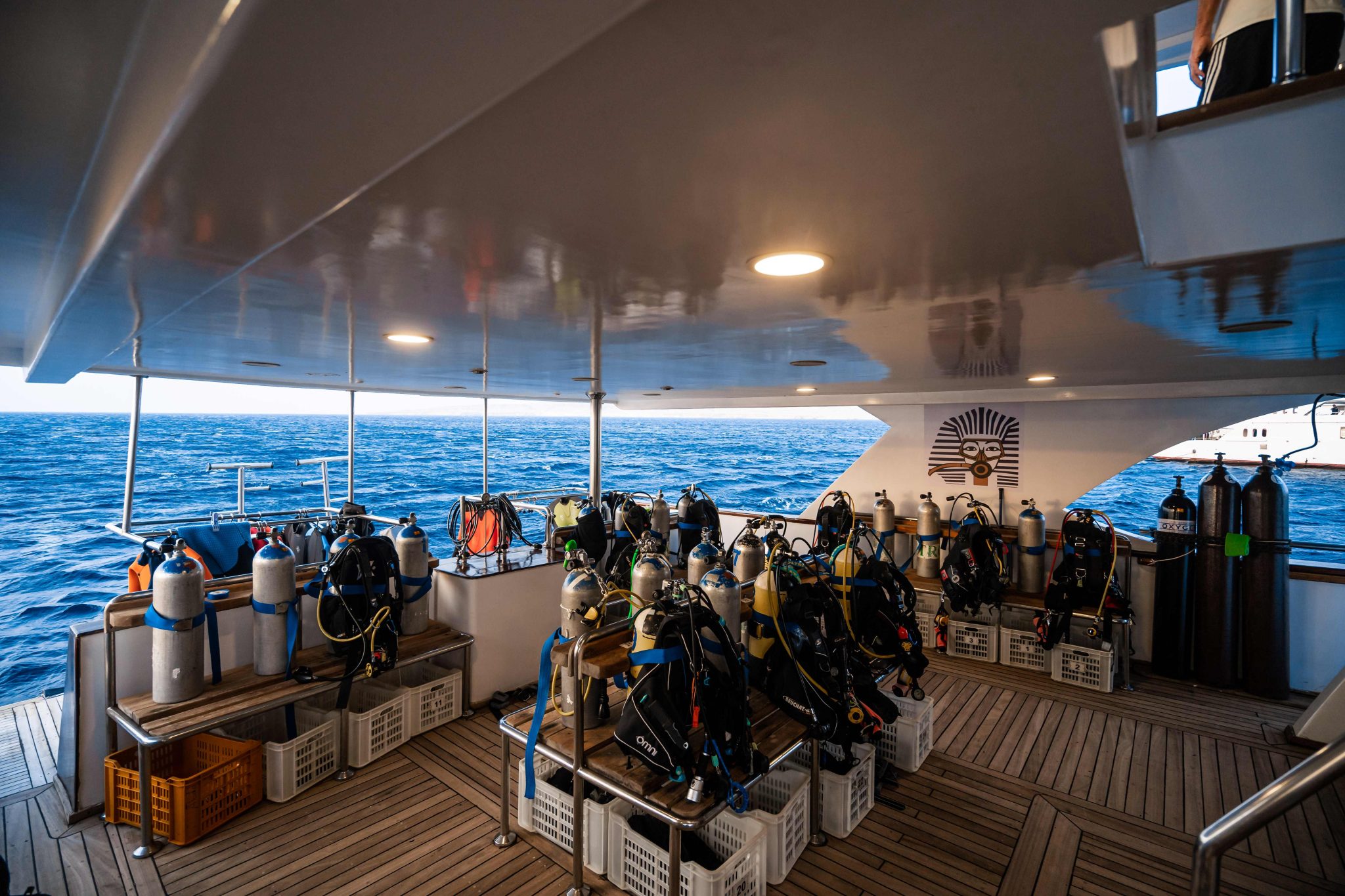
Safety is everyone’s priority, whether you are relaxing on board, swimming, snorkelling or diving.
On board Big Blue is fitted with smoke alarms, emergency lighting and a fire alarm system. The lower corridor has a full-size door fire exit at the bow and open stairs to the stern. There are evacuation plans in each room along with life jackets, glass breaker tool and a fire extinguisher.
BOOK NOW: INFO@PHARAOHDIVECLUB.COM / TEL: +44 7598 329059 or +20 100 6822000
Red Sea Splash at Fury Shoals is a very rare opportunity to get involved with marine biology expedition for children and adults. Open Ocean biologists are on board to provide fascinating and entertaining facts about the marine life you will see. The team will provide workshops on marine life identification and survey methods both of which, should you wish, you will have the chance to put into practice during your safari.

The week is open to snorkelers, scuba divers and non divers too!
Fury shoals is perfect for first time mariners as it offers plenty of protection from the weather.
We board at Port Ghaleb on Saturday evening and prepare to set sail early on Sunday morning.
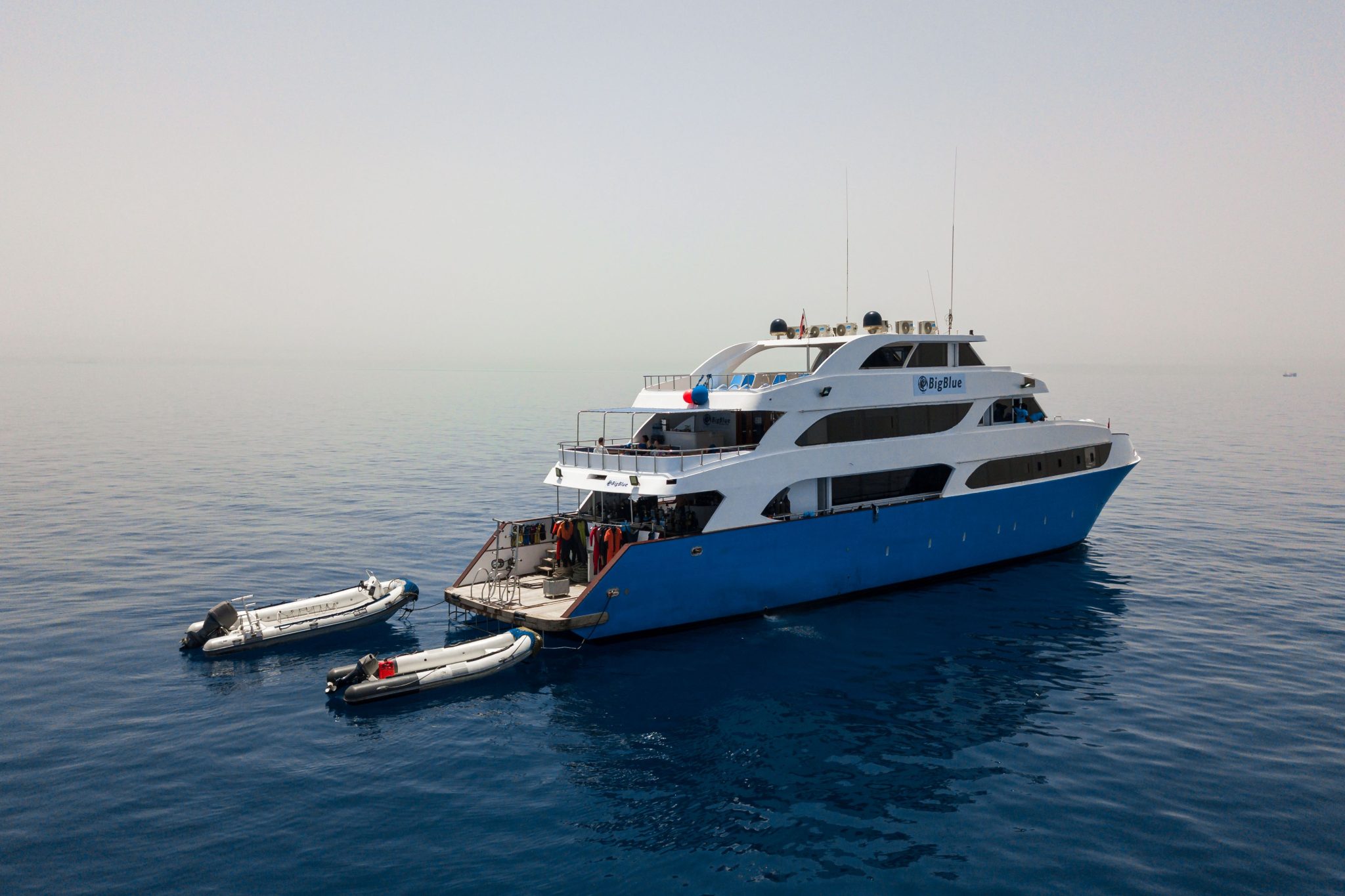
Heading south, our first day will be diving the reefs of Abu Dabbab before sailing overnight to reach our ultimate destination the Fury Shoals.
Here we will spend four days swimming, snorkelling and scuba diving amazing reefs. This includes guaranteed DOLPHIN encounters at Sataya Reef! After the last dive we haul anchor and head back to Abu Dabbab for our final two dives before disembarking our boat BIG BLUE.

Camp Extension Cost*
Adult £650 per adult
Under 16 £350 per child
BOOK NOW: INFO@PHARAOHDIVECLUB.COM / TEL: +44 7598 329059 or +20 100 6822000
FURTHER INFORMATION – INFO@PHARAOHDIVECLUB.COM
TEL: +44 7598 329059 or +20 100 6822000
Blogs
Meet Pure Dive Resort: Your Gateway to Unforgettable Diving in Bali, Indonesia

If you’re passionate about the underwater world, listen up! We’ve got an incredible opportunity for you to experience the vibrant reefs and majestic marine life of Nusa Penida, Bali, Indonesia.

info@purediveresort.com / +62 811 3999852 / www.purediveresort.com
Pure Dive Resort isn’t just another dive centre; it’s a team of experts dedicated to providing world-class scuba diving and freediving adventures around Nusa Penida, Lembongan, Ceningan, and even Bali.

info@purediveresort.com / +62 811 3999852 / www.purediveresort.com
Whether you’re a seasoned diver or completely new to the sport, Pure Dive Resort has something for you:
For certified Divers: Discover stunning dive sites, encounter manta rays, seasonal mola-mola (sunfish), and a dazzling array of marine life.
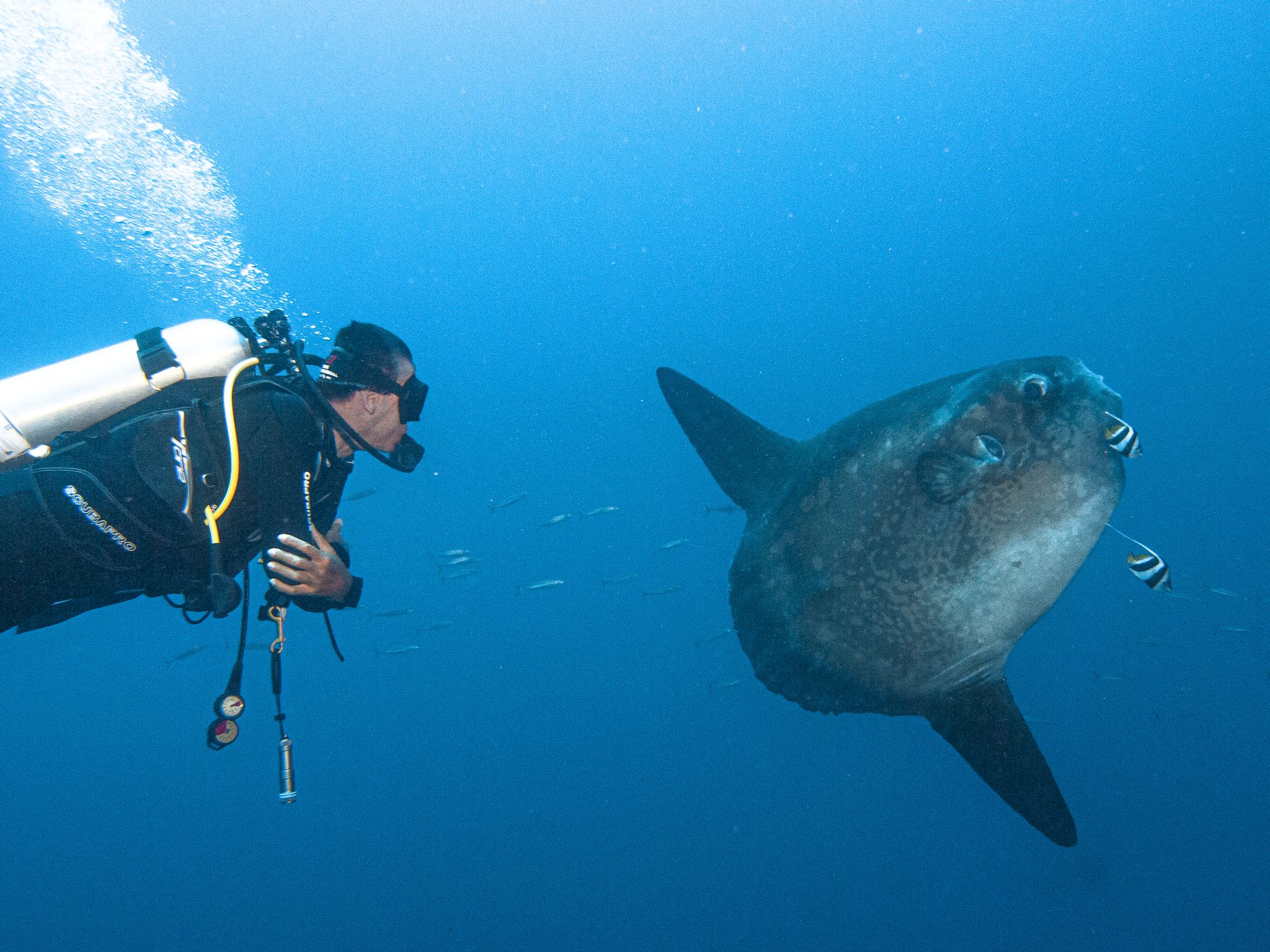
For beginners: Embark on your scuba journey with beginner programs like Try Scuba and Basic Diver, Open Water and Advanced certifications.

Freedivers: Explore the depths on a single breath with guided freediving experiences and courses.

Exclusive Scubaverse Offer: Save on Your Next Adventure
As a valued Scubaverse follower, you get an exclusive 10% discount on any Dive & Stay or Learn & Stay package booked at Pure Dive Resort for 2024. Dive into the crystal-clear waters, explore breath-taking reefs, and create unforgettable memories in this diver’s paradise.
Visit https://www.purediveresort.com/package-offers/ to explore amazing packages and claim your discount with the code: SCUBAVERSE10
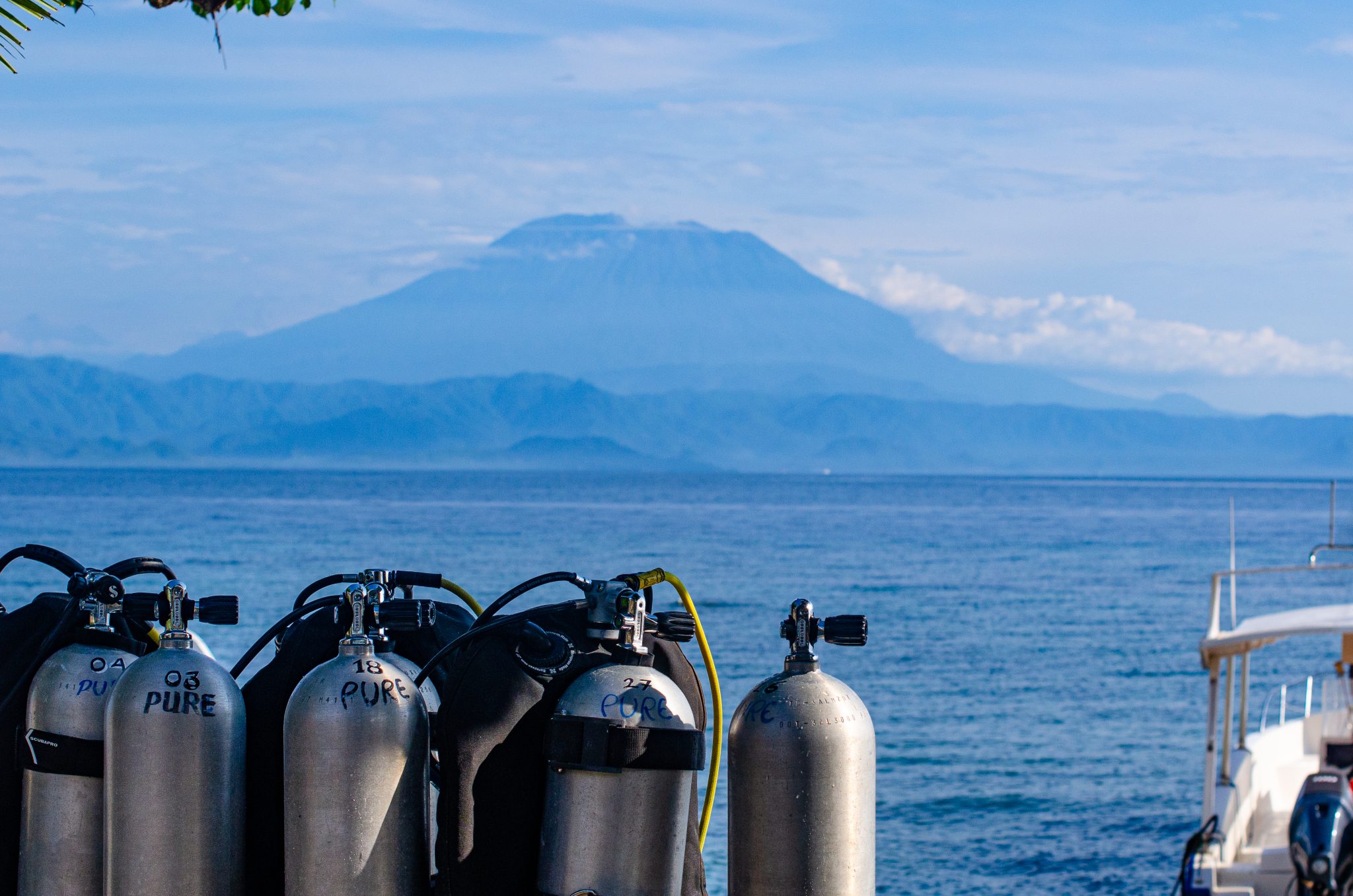
info@purediveresort.com / +62 811 3999852 / www.purediveresort.com
Ready to make a splash?
See you in Nusa Penida!
-

 News3 months ago
News3 months agoHone your underwater photography skills with Alphamarine Photography at Red Sea Diving Safari in March
-

 News2 months ago
News2 months agoCapturing Critters in Lembeh Underwater Photography Workshop 2024: Event Roundup
-

 Marine Life & Conservation Blogs2 months ago
Marine Life & Conservation Blogs2 months agoCreature Feature: Swell Sharks
-

 Blogs2 months ago
Blogs2 months agoMurex Resorts: Passport to Paradise!
-

 Blogs2 months ago
Blogs2 months agoDiver Discovering Whale Skeletons Beneath Ice Judged World’s Best Underwater Photograph
-

 Gear News3 months ago
Gear News3 months agoBare X-Mission Drysuit: Ideal for Both Technical and Recreational Divers
-

 Gear Reviews2 months ago
Gear Reviews2 months agoGear Review: Oceanic+ Dive Housing for iPhone
-

 Marine Life & Conservation2 months ago
Marine Life & Conservation2 months agoSave the Manatee Club launches brand new webcams at Silver Springs State Park, Florida





